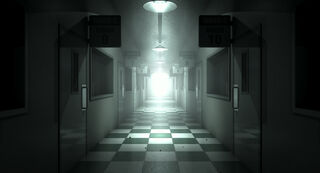Postpartum Depression
A Snapshot of Life in a 19th-Century Insane Asylum
What was happening in mental hospitals during an early time of treatment reform?
Posted August 17, 2020 Reviewed by Lybi Ma

The treatment of mental illness has an unsavory history, and the cruelty inflicted upon the mentally ill in asylums throughout western history has been well-documented.
However, in the 1700s and 1800s, reformers such as Philippe Pinel and William Tuke in Europe and Benjamin Rush and Dorothea Dix in the United States led the charge to make humane treatment for mentally ill individuals the norm, with a special emphasis on improving conditions for those who were confined to mental hospitals.
I recently stumbled on a document that provides a fascinating snapshot of the treatment of mental illness during this period of time. I am referring to the Biennial Report of the Trustees of the Illinois State Hospital for the Insane in Jacksonville, Illinois, from 1854. This institution was the first hospital of its kind in the state of Illinois.
The report provides extensive information about the 403 patients who resided in this hospital at some point in 1854, including their age, sex, marital status, prognosis, length of stay, and supposed cause of their disorders. The alleged cause of the disorders is in and of itself quite interesting. By far, the largest category for causes of disorders was listed as “unknown.” The list below provides the details:
Supposed Cause (Number of Cases)
Unknown (175)
Ill Health/Illness (38)
Domestic Affliction (now simply known as having a menstrual period) (30)
Religious Excitement (19)
Heredity (18)
Being “Disappointed in Love” (17)
Puerperal (Now called postpartum fever or postpartum depression) (16)
Head or Body Injury and Accidents (14)
Intense Study or Hard Labor (10)
Epilepsy (9)
Mental Affliction/Anxiety (8)
Spirit Rapping (i.e., a bad experience at a séance) (7)
Study of Scripture (5)
Intemperance (4)
Menopause (3)
Sun Stroke (3)
Confinement (3)
Pecuniary Embarrassment (Now known as financial problems!) (2)
Loss of a Child (2)
Lactation (2)
Homesickness (2)
Neglect/Abuse by a Husband (2)
Scarlet Fever/Scarlatina (2)
Chills and Fever (2)
Masturbation (1)
Seduction (1)
Fatigue (1)
Pregnancy (1)
Excessive Ambition (1)
Disease of the Brain (1)
Exposure (1)
Suppression Goitre (enlarged thyroid?) (1)
Jealousy (1)

The report also lists the reason for discharge from the hospital for each patient. Most recovered or died, but some got out following the request of a friend or relative. One even escaped by eloping.
The report offers insights into exactly who did or did not qualify for admission to the Hospital for the Insane. For example, it was a policy (p. 50) that “No idiot shall be admitted into the hospital, and every such case shall be discharged, the trustees and the superintendent having the right to decide what cases are idiotic.”
There were also, by today’s standards, shamelessly stereotypical analyses of how different ethnicities responded to treatment. For example (p. 31), “Germans are the best . . . they possess a healthy and elastic mental constitution; they are docile and affectionate under treatment and grateful when they recover.”
The authors of the report expressed special sadness over working with those who seemed to be incurable (p. 35, and note the flowery prose): “There are many who in insane asylums are orderly, healthy, and happy, but who when left to the guidance of their perverted propensities lose every attribute of humanity save its outward appearance.” Furthermore, “The higher feelings of humanity are never called more into exercise and the best ability more worthily put forth, than in throwing some few rays of sunlight upon such a somber picture as that of God’s own image groping its shadowed way through the desolate vale of incurable madness.”
And finally, being the director of a mental hospital in the 1850s was apparently an unbearable burden. According to the trustees (pp. 34-35), “No one director, no matter how vigorous physically, energetic intellectually, or blessed with sensibilities ever cheerful and unflagging can stand the pressure of a greater [duration of] duty than this for many years and live. That mortality which has swept away so many of our beloved band of brethren in this specialty within a few years . . . is too melancholy a proof that they who have attempted duties beyond a certain limit have uniformly fallen overpowered at the wayside.”
References
Stevenson, F., et al (1854, December). Fourth Biennial Report of the Trustees of the Illinois State Hospital for the Insane. Jacksonville, IL: Jacksonville Book and Job Office.


